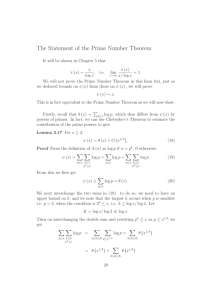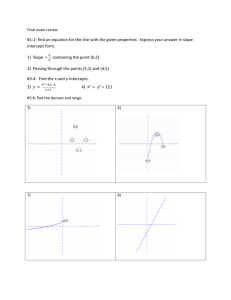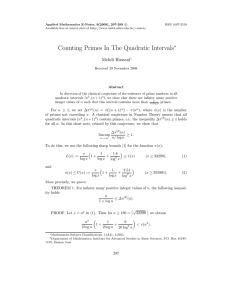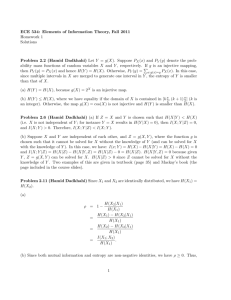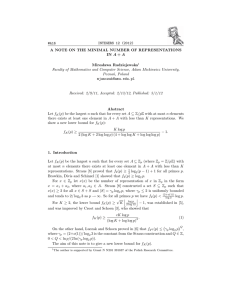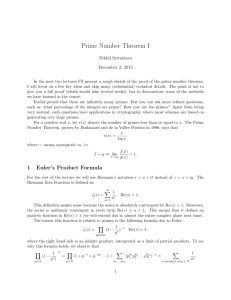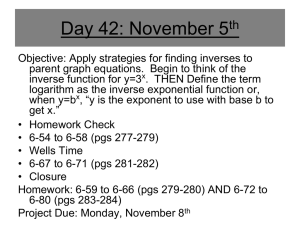AN EQUIVALENT FOR PRIME NUMBER THEOREM 1. Introduction
advertisement
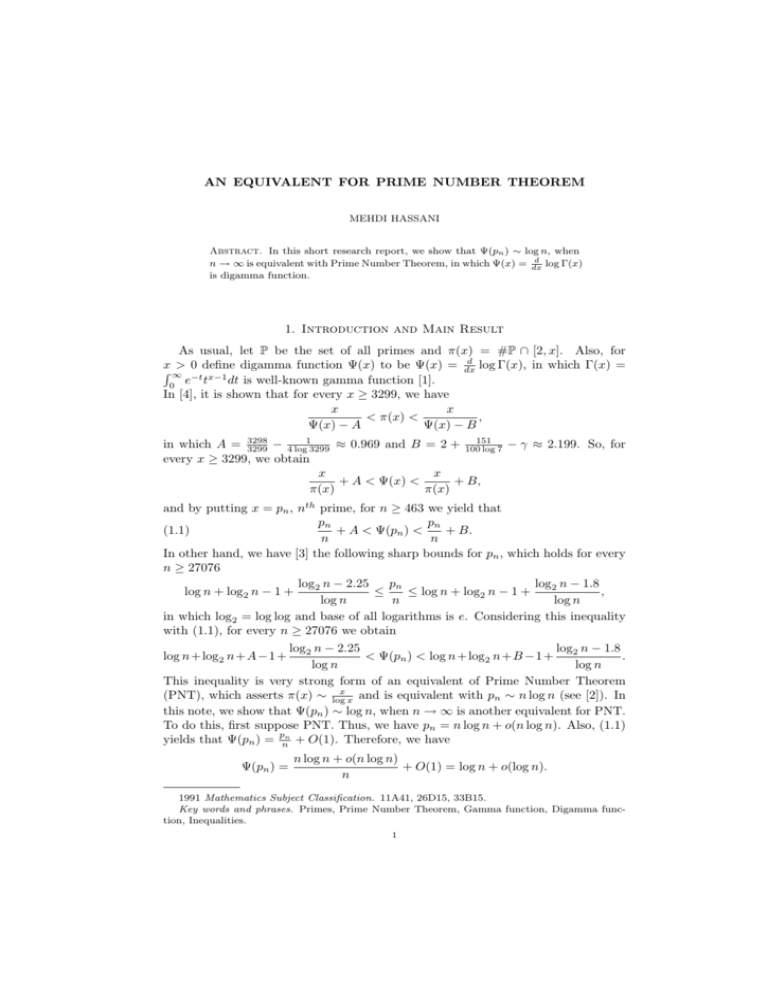
AN EQUIVALENT FOR PRIME NUMBER THEOREM MEHDI HASSANI Abstract. In this short research report, we show that Ψ(pn ) ∼ log n, when d n → ∞ is equivalent with Prime Number Theorem, in which Ψ(x) = dx log Γ(x) is digamma function. 1. Introduction and Main Result As usual, let P be the set of all primes and π(x) = #P ∩ [2, x]. Also, for d log Γ(x), in which Γ(x) = x > digamma function Ψ(x) to be Ψ(x) = dx R ∞ 0−tdefine x−1 e t dt is well-known gamma function [1]. 0 In [4], it is shown that for every x ≥ 3299, we have x x < π(x) < , Ψ(x) − A Ψ(x) − B 3298 in which A = 3299 − 4 log13299 ≈ 0.969 and B = 2 + 100151 log 7 − γ ≈ 2.199. So, for every x ≥ 3299, we obtain x x + A < Ψ(x) < + B, π(x) π(x) and by putting x = pn , nth prime, for n ≥ 463 we yield that pn pn (1.1) + A < Ψ(pn ) < + B. n n In other hand, we have [3] the following sharp bounds for pn , which holds for every n ≥ 27076 pn log2 n − 1.8 log2 n − 2.25 ≤ ≤ log n + log2 n − 1 + , log n + log2 n − 1 + log n n log n in which log2 = log log and base of all logarithms is e. Considering this inequality with (1.1), for every n ≥ 27076 we obtain log2 n − 2.25 log2 n − 1.8 log n+log2 n+A−1+ < Ψ(pn ) < log n+log2 n+B −1+ . log n log n This inequality is very strong form of an equivalent of Prime Number Theorem (PNT), which asserts π(x) ∼ logx x and is equivalent with pn ∼ n log n (see [2]). In this note, we show that Ψ(pn ) ∼ log n, when n → ∞ is another equivalent for PNT. To do this, first suppose PNT. Thus, we have pn = n log n + o(n log n). Also, (1.1) yields that Ψ(pn ) = pnn + O(1). Therefore, we have Ψ(pn ) = n log n + o(n log n) + O(1) = log n + o(log n). n 1991 Mathematics Subject Classification. 11A41, 26D15, 33B15. Key words and phrases. Primes, Prime Number Theorem, Gamma function, Digamma function, Inequalities. 1 2 MEHDI HASSANI Conversely, suppose Ψ(pn ) = log n + o(log n). By solving (1.1) according to pn , we obtain nΨ(pn ) − Bn < pn < nΨ(pn ) − An. Therefore, we have pn = nΨ(pn ) + O(n) = n log n + o(log n) + O(n) = n log n + o(n log n), which, this is PNT. References [1] M. Abramowitz and I.A. Stegun, HANDBOOK OF MATHEMATICAL FUNCTIONS: with Formulas, Graphs, and Mthematical Tables, Dover Publications, 1972. [2] Tom. M. Apostol, Introduction to Analytic Number Theory, Springer 2000. [3] P.Dusart, Inégalités explicites pour ψ(X), θ(X), π(X) et les nombres premiers, C. R. Math. Acad. Sci. Soc. R. Can., 21 (1999), no. 2, 53-59. [4] M. Hassani, Approximation of π(x) by Ψ(x), RGMIA Research Report Collection, 8(2), Article 2, 2005. Institute for Advanced, Studies in Basic Sciences, P.O. Box 45195-1159, Zanjan, Iran. E-mail address: mhassani@iasbs.ac.ir
